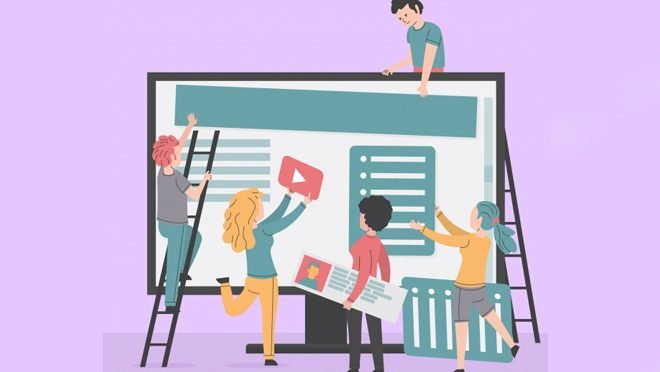Let’s make it clear. Storytelling goes beyond the content on the website!
Every search engine has billions of websites, but only a few achieve their desired traffic and user engagement because visitors fail to connect with the website.
Why? Because there’s no story, no ideas, and absolutely no reason to scroll down!
Ever wonder why you, as a designer, prefer some websites for your design inspiration but never want to visit some websites? It is because the website does not deliver its vision and values at first look!
Storytelling is the art of connecting and engaging with people and has always been a great tool to foster culture and tradition. From the good old times of Adam and Eve to motivational stories of climbing mountains and crossing oceans today, storytelling helps in connecting with people.

I personally love the user interface of Forbes! It’s sleek, subtly vibrant, and oh-so-classic! Here is your guide to using storytelling to boost traffic and enhance website engagement!
Engage the Visitor in the First 30 Seconds
It takes as less as 30 seconds for a website visitor to decide whether he wants to scroll down or not! Also, chances are that he has opened at least three to four websites on a new tab and is simultaneously scrolling through them. Most likely, his decision to further explore the website is dependent on the first screen and outlook.
Let’s take the example of an online store. A potential customer looking for the desired product must find a relevant product category on the top header. A new visitor should know the return and exchange policy and ongoing sales.
Tip: Post the most sought-after feature on the very first screen, such as sales notifications!
Post useful and Original Content
Website visitors are looking for content they won’t find on other websites while also hoping for relevant and trending news. For example, everyone is talking about Blockchain and cryptocurrencies these days, and visitors expect you to do as well. However, you must have value-adding content that reflects your vision, knowledge, and technical expertise.


Blogging and video tutorials are the key to engaging website visitors. More than 71% of marketers use visuals as their content marketing strategy, and 53% of marketers report blogging as their top marketing tactic. The content’s likes, shares, and comments can make your website viral in a few hours! Shareable content with catchy titles and pictures will automatically engage visitors and attract new visitors to the website.
Smart companies use blogging and website content to foster positivity, create the desired brand image, and keep customers hooked. For example, Coca-Cola’s off-site blog, Coca-Cola Conversations, helps in developing a connection between the brand and ongoing events.
Grow Email Addresses for Future Marketing
Having a lot of traffic will do you no good if it’s not sustainable. You need to capture email addresses from blog trafficking and email them your offerings later. The growing email list will allow you to build a community and foster strategic relationships with your website visitors. Having email addresses means that you can contact them directly.


Newsletter subscriptions are the best way to grab email addresses. And so are popups!
Popups appear on the screen immediately or after a visitor spends some time on the website. Popups can be annoying if they directly ask for the visitor’s email address. Instead, you should schedule a popup when a visitor is about to leave. For example, if a potential customer is adding and deleting the same product from the cart, you can give a discount of $5 or offer free delivery to boost sales.
Don’t Force Purchases or Actions.
Know that people will share your content and designs if they like it. They will buy your products if they are satisfied with the quality, features, and price. Forcing them will only make potential customers wonder about the reasons for your urgency. Don’t make people feel like you are desperate for their actions. Instead, convey the benefits of engaging with your brand.
Don’t make your website like a promotional brochure. Try communicating brand legacy and foster an emotional connection with the website visitors.
Tip: Use the scarcity principle to attract potential customers.
People come to your website to enhance their knowledge and learn from your technical expertise. Draft your content meticulously and ensure that the visuals resonate with the overall brand image and persona. Keep it simple, elegant, and insightful!




